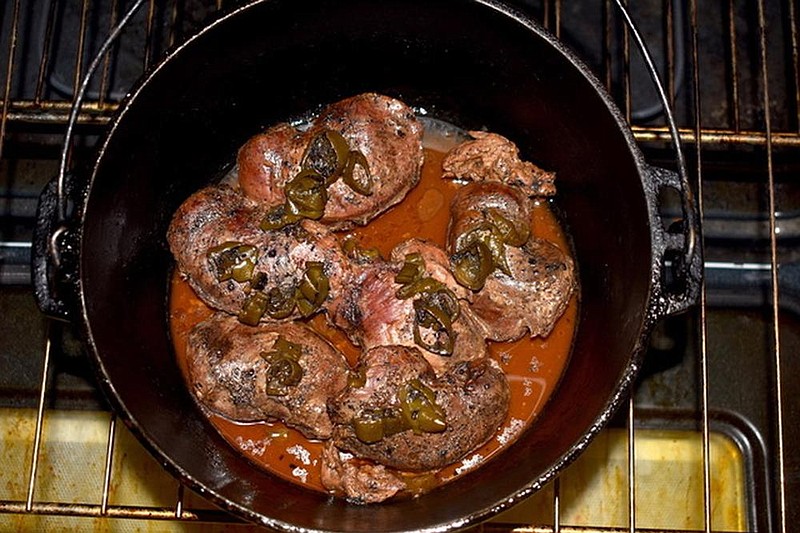To hear most hunters tell it, snow geese are perfect for covid-19 victims who have lost their senses of taste and smell.
Snow geese and blue geese are known for a strong, gamey flavor and malodor that give them a reputation for being inedible. In an article published in the Jan. 25, 1980, issue of The Washington Post, Hank Burchard wrote, "Snow geese stink. They stink when they are cleaned and stink even more while cooking, leading many hunters to assume that the great white game bird isn't fit to eat."
The Hendricks family eats what it kills, and Miss Laura converted six snow goose breasts into one of the finest waterfowl meals I have had. My finicky daughters ate every bite, which says quite a lot. They tolerate wild game, but nobody ever accused them of liking it.
According to Burchard, the key to making snow geese palatable is to cook them quickly. Roasting ruins them, he added.
We beg to differ, but more on that later. One key to good flavor is caring for the meat properly as soon as possible after killing it. As soon as I got the birds home, I removed the breasts and soaked them for seven days in saltwater. Joe Volpe, a waterfowl epicure, endorses extended brining, but he recommends draining the brine and adding fresh brine daily. This leaches the blood from the meat and makes it very light. High blood content is what gives a goose its distinctive liver flavor.
I soaked my birds in the same brine for a week. It did not work as thoroughly as daily draining would have, but it worked well enough.
After roasting two hours in a Dutch oven, the breasts had the color and, curiously, texture of beef roast. They were remarkably moist and tender, with a not unpleasant tang that was more subtle than that of mallard. Again, more aggressive brining and draining would have ameliorated most of that.
In addition to the goose, Miss Laura served grits and a light, white gravy, brown beans and slaw with ranch dressing.
As with all wild fowl, it took me a very long time to consume my goose because I chew very slowly to avoid breaking a tooth on a sphere of tungsten alloy or steel. Thankfully, none of us encountered any.
As a side note, I always open wound channels in breast meat, be it duck, pheasant or dove, to extract pellets. I don't know where they go, but I seldom ever find them.
All wild game takes special care for optimum flavor. I was raised by Depression era parents who came of age early when wild game was scarce. My mother grew up in wartime and post-war Germany, where wild game was entirely inaccessible. Their method of preparing deer, rabbit, squirrel and duck breast was to dredge it in flour and pan fry it. Roasting a whole duck involved little more than sprinkling it with salt and pepper and shoving it uncovered into an oven.
Since then, wild-game cooking has become an art form, with recipes that make for sumptuous table fare. This includes snow goose, a meaty bird so abundant that daily limits are essentially conceptual during the regular season and nonexistent during the annual Light Goose Conservation Order that follows the regular season. Prepared properly, they are worthy of the respect and appreciation afforded other game.
Miss Laura's Roast Goose Breast
6 goose breasts soaked in saltwater for several days, rinsed thoroughly and drained
Nature's Seasons seasoning blend
¼ cup jalapeno pepper rings
8 oz. Ken's Steak House lite raspberry walnut vinaigrette dressing
½ cup leftover sausage grease
Preheat oven to 350 degrees. Grease large Dutch oven pot with sausage grease. After rinsing and thoroughly draining the goose breasts, dredge them in sausage grease so that they are coated. Arrange breasts in bottom of Dutch oven and sprinkle generously with Nature's Seasons seasoning blend. Arrange jalapeno pepper rings on top. Cover with the vinaigrette dressing. Put lid on Dutch oven and place in the oven for 2 hours.
Editor's Note: Miss Laura says that this recipe would be even better with a generous dose of sliced bell peppers, yellow peppers, red peppers, onions and mushrooms. I would also add fresh diced garlic.
Joe Volpe's Goose Goulash
4 goose breasts
3 large yellow onions chopped
3-4 tbsp paprika
3 green peppers chopped
1 can tomatoes (large size)
1 can (15 oz.) tomato sauce
2 tbsp margarine
1 pk. Maggi spaetzle
Cut goose breasts in 1 1/2-inch cubes. Saute onions and remove from heat. Add goose with paprika and brown lightly. Transfer skillet contents to crock pot. Add canned tomatoes, tomato sauce, peppers, salt and pepper. Cook slowly (a long time), stirring occasionally, until all ingredients are tender.
Prepare the spaetzle according to the directions. Transfer the spaetzle to a skillet with butter and coat with Italian flavored breadcrumbs. Simmer for 15 minutes. Cover individual servings of spaetzle with the goose ensemble.


